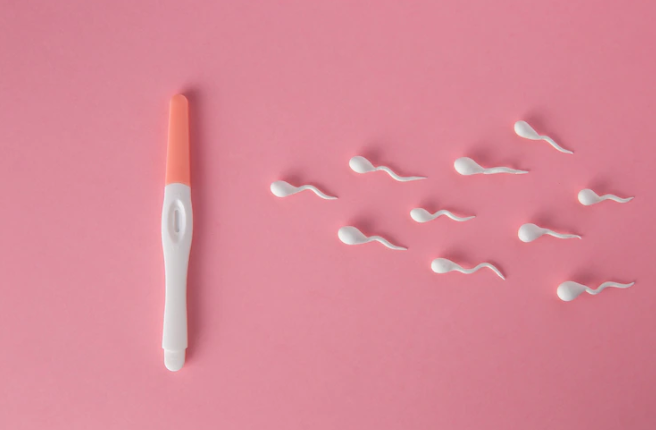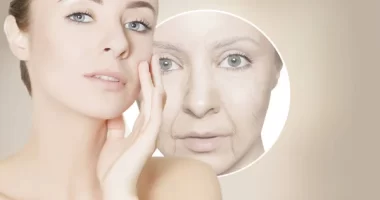Ovulation occurs when the body releases an egg from an ovary in preparation for fertilization by sperm.
It is a component of the menstrual cycle, which most women go through from puberty to menopause.
We’ll go over how long ovulation lasts, what happens during it, signs and symptoms, tracking ovulation, and when to see a doctor in this post.
How Many Days Does Ovulation Last
Ovulation lasts for around a day.
The body causes an egg to be released from the ovaries. That egg is only viable for one day after it begins its trip to the uterus.
Sperm can survive for up to 6 days in the uterus and fallopian tubes, which connect the ovaries to the uterus. This suggests that people can become pregnant for about 6 days during their menstrual cycle.
What happens during ovulation
The body produces the highest amountsTrusted Source of the hormone estrogen during ovulation.
This high surge of hormones causes the ovaries to release the eggTrusted Source into the fallopian tubes. The egg travels through them toward the uterus. Estrogen has already caused the uterus to thicken in preparation for implantation.
Once the ovaries release the egg, the levels of estrogen in the body begin to fall.
Signs and symptoms: Ovulation
There are several signs and symptoms that a person is currently experiencing ovulation.
These include:
- cervical fluid, also called vaginal discharge, that looks like raw egg white
- slight decrease in basal body temperature, followed by a sharp increase after ovulation
- the cervix will change position to being high, soft, and open
Some people may experience the following signs and symptoms:
- light spotting
- light cramping or pain on one side of the pelvis
- breasts feeling tender
- increased sex drive
- a heightened sense of smell, taste, or vision
How ovulation affects fertility
People can usually only get pregnant if they are having unprotected sex just before or during ovulation. People are most likely to get pregnant if they have sex within a day or two of ovulation.
However, it is possible for people to become pregnant if they have sex up to several days before ovulation because the sperm can swim up the fallopian tubes to wait for the ovaries to release the egg.
The best way to become pregnant is to have frequent unprotected sex before and during ovulation.
Some people may use signs and symptoms of ovulation as a way to avoid becoming pregnant.
Fertility awareness methods, which people may also know as natural family planning or the rhythm method, may help people plan their sexual activity around their ovulation so that there is less of a chance they will get pregnant.
However, a person who does not want to get pregnant should consider using birth control, which is much more effective at preventing pregnancy.
There are several ways in which people can track their ovulation to determine when they are at their most fertile:
- the cervical mucus method, in which people check their vaginal discharge each day
- the calendar method, in which people note their menstrual cycle on a calendar
- ovulation predictor kits, which track LH hormone levels, as a surge in LH triggers ovulation. Note that these may be inaccurate in some people, including those with polycystic ovary syndrome (PCOS).
In contrast, for individuals who do not wish to conceive, various methods of birth control are much more effective.
According to Planned Parenthood, using condoms is 85% effective, using a birth control pill or patch is 91% effective, and using a birth control implant or hormonal intrauterine device (IUD) is 99% effective.
What prevents ovulation?
Hormonal birth control and certain health conditions can prevent ovulation.
There are several hormonal birth control methods that prevent the ovaries from releasing an egg.
These include:
- birth control implant
- progesterone IUD
- NuvaRing
- birth control shot
- the pill
- birth control patch
Some health conditions that may prevent ovulation includeTrusted Source:
- polycystic ovary syndrome (PCOS)
- eating disorders that prevent the brain from secreting certain hormones
- genetic conditions, such as Turner syndrome
There are four stagesTrusted Source of the menstrual cycle:
- the follicular phase
- ovulation
- the luteal phase
- menses
The follicular phase
This phase typically occurs from days 0–14Trusted Source of the menstrual cycle. If a person has a menstrual cycle that is not 28 days, it is because the follicular phase is either longer or shorter than 14 days.
During this phase, the hormone that the body produces the most is estrogen. This helps thicken the uterine lining, making it possible for a fertilized egg to implant itself there.
The higher amount of estrogen also makes it easier for sperm to enter the reproductive system. The estrogen changes the cervical mucus, making it easier for sperm to gain entry.
Ovulation
Ovulation occurs 14 days beforeTrusted Source the start of menses, the blood that comes out during a period.
If a person has a 28-day cycle, this means that ovulation occurs on day 14. People with a varied cycle will experience ovulation at different times.
Day 1 of the menstrual cycle is the first day of a period, or menses.
During ovulation, the amount of estrogen the body produces is at its highest. This surge in estrogen triggers a surge in LH, which then stimulates the ovary to release an egg. The cervix also produces more watery mucus to better accommodate sperm.
The luteal phase
In a 28-day cycle, this phase starts on day 14Trusted Source, and ends on day 28.
Instead of mainly producing estrogen, the body produces more of a different hormone, progesterone.
During the luteal phase, progesterone triggersTrusted Source the uterine lining to secrete substances that support a pregnancy.
The progesterone also decreasesTrusted Source the amount of cervical mucus the body produces. The fertilization window has passed, so receiving sperm is no longer a priority for the body. The higher amount of progesterone also increases the body’s temperature.
If sperm fertilizes the egg, then the body maintains the higher levels of estrogen and progesterone as the egg implants itself into the uterine lining. However, if this does not happen, then the levels of estrogen and progesterone rapidly decrease as the body prepares for menses.
Menses
The drop in levels of estrogen and progesterone causes the uterine lining to shedTrusted Source. Menses typically happens on day 1Trusted Source of the menstrual cycle.
Most menstrual blood is arterial, which means that the blood contains oxygen. Only 25%Trusted Source of the blood is venous, which means that it does not contain any oxygen. Venous blood tends to be darker in color than arterial blood.
The menstrual blood also contains tissue debris. A process called fibrinolysis prevents the menses from containing clotted blood unless a person experiences a heavy flow.
By tracking the menstrual cycle, people can learn whether their periods are regular or irregular and whether their symptoms are any cause for concern.
The easiest way to track the menstrual cycle is by marking when a period starts and endsTrusted Source on a calendar.
It may also be usefulTrusted Source to track:
- any premenstrual symptoms such as cramping and bloating
- when bleeding begins
- the heaviness of the bleeding
- any period symptoms
- when the bleeding ends
A person may consider tracking their menstrual cycle with an app. Several appsTrusted Source that track the menstrual cycle are available to download. Some are free and may be capable of tracking certain symptoms.
When to see a doctor
It is important to see a doctor if there are signs that something unusual is happening during the menstrual cycle.
Some signs that a person may need to make an appointment with a doctor are:
- having had unprotected sex, then missed a period
- having menstrual bleeding that is heavy enough that a person needs to change maxi pads or super tampons every hour
- having a period that lasts longer than usual, or longer than 7 days
- experiencing light-headedness, dizziness, or a fast pulse during a period
- having clots or a gushing sensation
- reaching 16 years of age and not having gotten their first period
- having severe pain before or during a period
- bleeding between periods
- feeling sick or having a temperature when using a tampon
- being unable to engage in everyday activities because of symptoms before or during their period
- having a period more frequently than every 21 days or less frequently than every 45 days
- experiencing feelings of anxiety or depression around the time of a period
These symptoms may be a sign that something unusual is happening in the body that is causing a change in the menstrual cycle.
Summary
Ovulation is the release of eggs by the ovaries in preparation for fertilization. It’s a natural aspect of the menstrual cycle that helps the body get ready for pregnancy.
The menstrual cycle varies in length from person to person. As a result, it is critical for an individual to keep track of what is usual for them.
If you are experiencing any worrying symptoms, you should schedule an appointment with a doctor.










